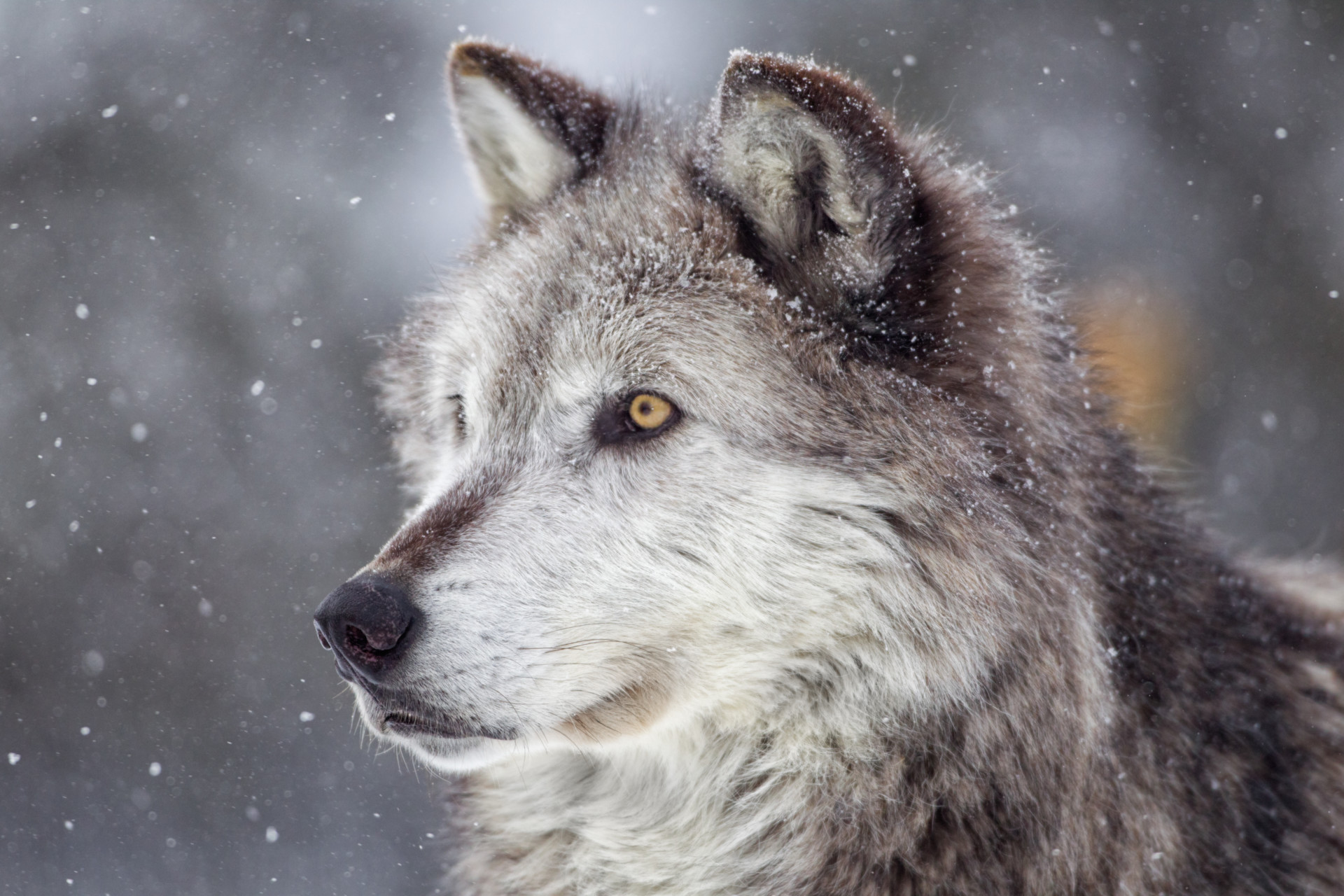
Historically, the gray wolf was the most widely distributed land mammal on earth, other than humans. Due to habitat loss and predator control programs, wolves were eliminated through much of their former range. Photo: iStock
Colorado residents will vote in November on a ballot initiative that calls for the proposed reintroduction of gray wolves to the state. Proposition 107, a citizen-initiated measure, would direct the Colorado Parks and Wildlife Commission to develop and oversee a science-based plan to restore wolves to the western part of the state.
To help ensure the public is informed on this topic, Colorado State University scientists have teamed up with Extension staff to produce and publish educational materials on the possible wolf restoration.
The resources include 12 information sheets on topics including wolf biology, wolves and livestock, disease, human and pet safety, big game and hunting, ecological effects and economics, and a robust list of frequently asked questions with answers.
“As Colorado’s only land-grant institution, CSU is uniquely positioned to provide science-based information on the subject,” said Kevin Crooks, professor in the Department of Fish, Wildlife and Conservation Biology and director of the new Center for Human-Carnivore Coexistence. “The educational materials have undergone extensive review by scientists within and outside CSU, including world experts on wolves.”
Crooks helped lead the development of these educational materials. The center he leads is focused on integrating science, education and outreach to minimize conflict and facilitate coexistence between people and predators.
The center’s team has developed projects in a variety of systems where human-carnivore coexistence is proving difficult. In addition to wolves, they are tracking growing conflicts with urban black bears and coyotes, polar bears in energy fields in Alaska, lions and cattle keepers in East Africa, and ranchers in systems with predators in the United States.
Wolves already spotted in Colorado
In early 2020, after the initiative was approved to be placed on the ballot, a pack of wolves was confirmed to be living in Moffat County in the northwestern part of the state. Another lone wolf was confirmed in North Park in summer 2019. These wolves likely migrated from a nearby state, perhaps Wyoming, where they were reintroduced 25 years ago.
“Science-based information provided from this team is critical to aid in policy development around wildlife and public lands,” said Ashley Stokes, associate vice president for Engagement and Extension at CSU.
Stokes said that these resources are also important for people who vote, so that they may better understand the issues surrounding potential reintroduction of wolves and the impacts on ecological systems, agricultural producers and local communities.
CSU researchers analyzing public response, media coverage
Rebecca Niemiec, assistant professor in the Department of Human Dimension of Natural Resources at CSU, recently led research studies on public perspectives and media coverage of the wolf restoration issue in Colorado.
“One thing we have found from our social science research is that the public has a diversity of beliefs about the potential positive and negative impacts of wolves,” explained Niemiec. “Some of these beliefs are supported by ecological and social science research, while some of them are not. Our hope is that with these educational materials, we can facilitate more productive, science-based discussions about wolf reintroduction and management.”
John Sanderson, who directs the Center for Collaborative Conservation at CSU, helped direct the scientific review process and worked with partners to produce the educational materials.
“The topic of wolves is uniquely contentious,” Sanderson said. “If wolves are part of Colorado’s future, we need an inclusive process of creating policy and making decisions that builds trust and identifies mutually acceptable solutions among people with different perspectives.”
Public surveys over the last few decades suggest support for wolf reintroduction from the majority of Colorado residents. Despite those survey results, restoring wolves in the state is a contentious topic that taps into diverse emotions and passions across various groups. And misinformation about wolves is widespread, on all sides of the issue.
CSU Extension has a goal to empower Coloradans and to address important and emerging community issues using science-based educational resources. The information sheets are also available to the public through Extension’s website.
Learn more about the Center for Human-Carnivore Coexistence
The Center for Collaborative Conservation and the Center for Human-Carnivore Coexistence are part of the Warner College of Natural Resources.